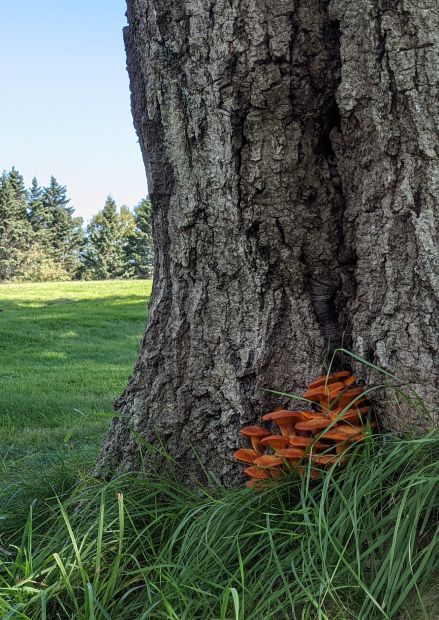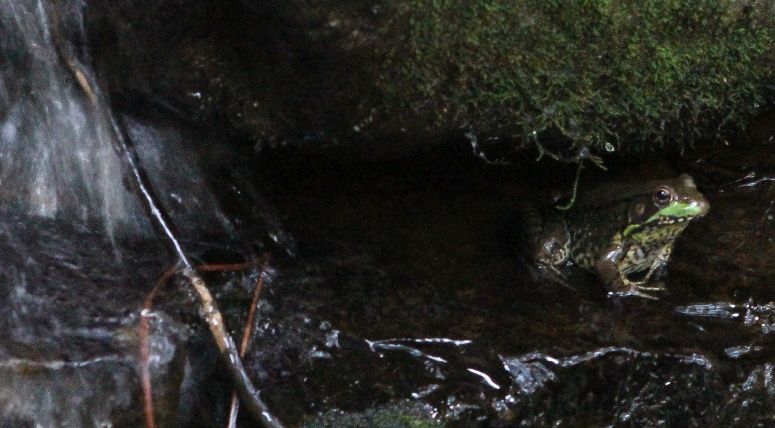Choral Work
-
The Call – Stroope/Herbert

Come, my Way, my Truth, my Life:
Such a Way, as gives us breath:
Such a Truth, as ends all strife:
Such a Life, as killeth death.
Come, my Light, my Feast, my Strength:
Such a Light, as shows a feast:
Such a Feast, as mends in length:
Such a Strength, as makes his guest.Come, my Joy, my Love, my Heart:
George Herbert
Such a Joy, as none can move:
Such a Love, as none can part:
Such a Heart, as joyes in love.The Call was first a poem penned by George Herbert (1593-1633), a poet, orator and priest of the Church of England. It is one of the dozens of poems in The Temple, published in the year of his death at age 39. Herbert is considered a Metaphysical poet noted for use of direct language in an abstract setting. The Call couples the metaphysical identities of Jesus articulated in 14:6 “I am the way, the truth, and the life” with the invitation of these identities into our lives, as found in the late verses of Revelation 22.
Ralph Vaughan Williams set The Call, along with other poems from The Temple, to music in Five Mystical Songs (1911) originally written for baritone voice [1]. This version of The Call has been employed in worship recently at ESUMC; it has also been adapted for use as a hymn, #164 in our current hymnal.
Z. Randall Stroope (b. 1953) published his implementation of The Call in 2006 (listen). True to the original text, it employs an up-beat major theme building to the end, with some use of syncopation.
Stroope is an American composer, conductor, and sometimes faculty member. He is said to have published over 190 works including choral and instrumental works.
__
- [1] Vaughan Williams has been discussed in these pages here.
- https://en.wikipedia.org/wiki/George_Herbert
- https://www.ccel.org/h/herbert/temple/Call.html
- https://en.wikipedia.org/wiki/Five_Mystical_Songs
- https://en.wikipedia.org/wiki/Z._Randall_Stroope
- https://www.zrstroope.com/
-
All Who Dwell In The Shadow of the Lord – Stroope

The text for Z. Randall Stroope’s All Who Dwell In The Shadow of the Lord (2010 – listen) is drawn loosely from Psalms 90 and 91 [1]. The text features “Lauda, Laudé!” repeated at the end of many of the lines [2]. This device is a play on words: Lauda is Italian for song, Laude its plural as well as the Latin word for praise, glory, honor (as in Magna Cum Laude). The precedent for the phrase is Simple Song from Leonard Bernstein’s polarizing Mass (1971), with Stephen Godspell Schwartz.
The phrase and idea “All who dwell in the shadow of the Lord find a refuge and fortress”, extracted from Psalm 91:1-2, is a fine bit of wordsmithing.
Z. Randall Stroope (b. 1953) is an American composer, conductor, and sometimes faculty member. He is said to have published over 190 works including both choral and instrumental projects.
__
- [1] Psalm 90 is source of Isaac Watts’ Oh God Our Help In Ages Past
- [2] Per http://rhetoric.byu.edu/Figures/Groupings/of%20Repetition.htm, this repetition is termed an epistrophe.
- https://en.wikipedia.org/wiki/Z._Randall_Stroope
- https://www.zrstroope.com/
-
There is a Balm in Gilead – Dawson
Is there no balm in Gilead?
Jeremiah 8:22a
No doubt you have heard by now that there is indeed a balm in Gilead, or at least there was, prior to the extinction of Commiphora opobalsamum [1]. This sturdy bush grew in the stony arid hills of Gilead, a region east of the Jordan that was the inheritance of the tribes of Reuben, Gad, and part of Manasseh. Resin from the bush was harvested for medicinal balms that were an economic engine for the region for more than 1000 years.
However powerful the balm was, it did not heal sin-sick souls. That would be the work of Jesus; so in this usage the Balm of Gilead is another personage of Jesus, like The Lion of Judah or The Good Shepherd. This use of metaphor, along with the nature of the tune and the words, suggest to me a date on the late end of the African-American Spiritual spectrum, and suggest a variety of influences on what came to be the hymn.
William Levi Dawson (1899 – 1990) was a composer and arranger specializing in African-American Spirituals among other musical achievements; he is also remembered for his contributions to the Tuskegee Institute musical programs, particularly the choir that he raised to international prominence. His There is A Balm In Gilead (1939 – listen), is a straightforward anthem arrangement of the hymn employing echo and solo voice features.
__
- Not Pistachia lentiscus, according to https://www.researchgate.net/publication/282748639_Frankincense_Myrrh_and_Balm_of_Gilead_Ancient_Spices_of_Southern_Arabia_and_Judea
- https://en.wikipedia.org/wiki/William_L._Dawson_(composer)
- https://en.wikipedia.org/wiki/There_Is_a_Balm_in_Gilead
-
The Lord is My Shepherd – Rutter

John Rutter (b. 1945) is certainly the preeminent name in English language choral music and likely needs little introduction to this audience. In addition to his many anthems (For The Beauty of the Earth) and eleven major works (Requiem, Mass of the Children), he has a particular affinity for Christmas music, with dozens of individual carols and multiple compendia with collaborator David Willcocks (1919-2015). The compendium 100 Carols for Choirs has been employed frequently by the Chancel Choir; there are 83 other Rutter entries in our library database.
Rutter formed The Cambridge Singers, a professional choir, in 1981 and has published several volumes of recorded music with that group.
Beyond its face-value merit, The Lord Is My Shepherd (listen) is interesting in that it was originally penned in 1978, then subsequently integrated into Requiem (1985) and later Psalmfest (1993).
Mikey Arichea returns to the instrumentalist role, this time providing the lyrical oboe part that accompanies the four-part choir and piano. Andrew Otto, currently a student at Broughton High School, accompanies on the piano.
__
- https://en.wikipedia.org/wiki/John_Rutter
- https://en.wikipedia.org/wiki/The_Lord_Is_My_Shepherd_(Rutter)
-
Lord, Thou Hast Searched Me – Helvey
Howard Helvey’s Lord, Thou Hast Searched Me (2011, listen) is an implementation of a very old (by American standards) hymn tune Tender Thought paired with a John Milton (1608-1674) paraphrase of Psalm 139:1-12. Per the music publisher MorningStar, this text is among Milton’s earliest documented writings, at age 15.

Tender Thought first appeared in Kentucky Harmony (1816 – Ananias Davisson), a shape-note songbook said to be the first from south of the Mason-Dixon line. Tender Thought can be seen in Kentucky Harmony here. Note the melody in the tenor line.
Howard Helvey (b. 1968) is a musician engaged on several fronts, having published numerous sacred choral works and involved in leading a church music program and a professional choir, guest conducting, and so on. He lives and works in Cincinnati. His Lord, Thou Hast Searched Me brings a fine accompaniment and obbligato to the traditional tune along with some variant takes on rhythm and harmonization.
Tender Thought as it appears in Kentucky Harmony is in the natural minor key (Aeolian mode). Helvey’s implementation uses the Dorian mode with the Major 6th instead of the minor 6th (except where flatted with accidental). The distinction is only apparent in the harmonization, as the Tender Thought melody itself does not include any 6ths.
___
- https://www.ecspublishing.com/lord-thou-hast-searched-me-psalm-139.html
- https://en.wikipedia.org/wiki/Kentucky_Harmony
- https://howardhelvey.com/biography/
-
Praise The Lord – Handel/Hopson

Hal Hopson (b. 1933) has been a prolific producer of all manner of sacred music over the previous few decades, including vocal solos, choral anthems, organ music, and larger works such as cantatas. His works are asserted to number in the thousands; our library at ESUMC includes 46 Hopson works for children, youth, and adult choirs as well as handbells and other instrumentals.
In Praise the Lord (1974 – listen), Hopson has extracted the best parts of two movements (Hail Judea, Happy Land duet, then chorus) of the Handel oratorio Judas Maccabeas (1746) and melded them into a lively two-minute anthem. This is a fine bit of engineering! While the text has the feeling of a Psalm in the high nineties, it is in fact Hopson’s invention and seems to emerge spontaneously from the spirit of Handel’s music.
George Frideric Handel (1685-1769) based Judas Maccabeas on the Jewish revolt from the Seleucid Empire in the second century BC as recounted in the deuterocanonical book 1 Maccabees. In addition to Praise the Lord, Judas Maccabeas is also the source of the hymn tune Judas Maccabeas heard in Thine Be the Glory each Easter. The tune is taken from movement 56: See the Conqu’ring Hero Comes. You can hear Robert Redford and Michael Kitchen sing the last line of See the Conqu’ring Hero Comes in the film Out of Africa (1985).
__
- https://en.wikipedia.org/wiki/Hal_Hopson
- https://en.wikipedia.org/wiki/Judas_Maccabaeus_(Handel)
- https://en.wikipedia.org/wiki/George_Frideric_Handel
-
Mothering God – Trenney/Janzen
The Trenney arrangement of Mothering God (2020 listen, and see Trenney at the piano playing from manuscript) is a moving work that has breathed a life into the text with music that matches the flow and feeling of the text.

Tom Trenney (b. 1977) is a current force in sacred music with dozens of original works and arrangements published within the last decade. His arrangements encompass the very familiar as well as the somewhat obscure, along with many original works. His big choir works often have a gospel choir feel in both style and text. Some will remember Maya’s Prayer for Peace, one of the many Trenney selections in the ESUMC library, that is illustrative of the style and implementation of progressive lyrics. Trenney is the Minister of Music at First-Plymouth Congregational Church in Lincoln, Nebraska and is on faculty at Nebraska Wesleyan University.
The text of Mothering God originates with Julian of Norwich, a 14th century mystic in medieval England. The original text was adapted by poet Jean Janzen (b. 1933) for a 1992 Mennonite hymnal. The text has been set to multiple tunes, notably Maryton (H. Percy Smith, 1874), which is also the tune used with O Master Let Me Walk With Thee. This combination appears in the current The Faith We Sing hymnal. Confusingly, Trenney has also arranged Mothering God using the Maryton tune for choir; today’s solo uses the Trenney-composed tune.
Soprano Grace Sugg has sung with the Chancel Choir for over 12 years.
_
- https://tomtrenney.com/
- https://www.umcdiscipleship.org/resources/history-of-hymns-mothering-god-you-gave-me-birth
- https://hymnary.org/tune/maryton_smith
- https://hymnary.org/text/mothering_god_you_gave_me_birth
-
Treasures in Heaven – Clokey

Treasures In Heaven (1941 listen) enjoyed immense popularity in the heyday of organized religion in America in the mid 20th century [1]. The work is based on the King James version of Matthew 6:19-21 and 7:7-8, portions of the Sermon on the Mount [2]. The text follows the scripture precisely at the sacrifice of a discernable meter, alternating between phrases rooted three and four beats. The most salient and dramatic feature of the arrangement features the lower three voice parts walking an inverted triad down an entire octave in support of an octave down-jump in the soprano line (Thieves break through and steal!). A soprano solo interlude introduces the Matthew 7 text (Ask and it shall be given…) between portions A and B in an ABA construction.
Joseph W. Clokey (1890-1960), the son of a Presbyterian minister, was Professor of Organ among other capacities at Miami University (Ohio). He was an active composer of sacred and secular works including symphonies, opera, and over 100 choral works. [3]
If the Clokey name has a familiar ring, it may be because the composer’s son Art was the creator of Gumby and Pokey, as well as the Davey and Goliath clay animation figures. [4]
__
- [1] https://religionnews.com/2014/12/11/1940s-america-wasnt-religious-think-rise-fall-american-religion/
- [2] We have discussed an aspect of the ASK teaching here .
- [3, 4] https://en.wikipedia.org/wiki/Joseph_W._Clokey
-
Be Thou My Vision – arr. Parker

Alice Parker (b. 1925) is the grande dame of American choral music, having composed a wealth of original work and occupied a litany of leadership roles. She is perhaps most recognized for her arrangements, notably of American folk music. Melodious Accord – A Concert of Praise is a collection of American folk worship tunes in the ESUMC library [1]. Melodious Accord is also the title of many things Alice Parker, including her publishing concern, benevolent organization, and one of her several books [2]. Early in her career she enjoyed a professional partnership with Robert Shaw, the dean of the American choral scene in the mid-20th century, and later formed her own professional chorale (also named Melodious Accord) in 1985.
Be Thou My Vision is a hymn of Irish extraction, first appearing in English in 1912 and later paired with the now-familiar Slane hymn tune, also of Irish origin, in 1919. Parker’s 1976 arrangement [listen] uses four of the verses that make up the commonly translated text [3]. Parker’s version is a straight-forward statement of the work scored for SATB including a descant along with an accompaniment of harp and organ.
The hymn text is not associated with any particular Bible verse. The infrequently heard “Be thou my breastplate” verse is nevertheless reminiscent of Ephesians 6:11-18 (Put on the whole armor of God).
Be Thou my Breastplate, my Sword for the fight;
Be Thou my whole Armor, be Thou my true Might;
Be Thou my soul’s Shelter, be Thou my strong Tow’r,
O raise Thou me heav’nward, great Pow’r of my pow’r.The phrase “Be thou my vision” is familiar enough that we likely don’t give it the reflection it deserves. Ephesians 5:1-2 can help put us in the mind of “Be thou the perfect ideal that I aspire to live up to” : “Therefore be imitators of God, as beloved children, and walk in love, as Christ loved us and gave himself up for us, a fragrant offering and sacrifice to God.”
___
- [1] The choir recorded the work to CD; copies are in the archives.
- [2] The expression Melodious Accord is extracted from a stylized version of Psalm 100, per Parker’s book of the same title.
- [3] The current Methodist Hymnal omits the “Riches I heed not” verse, although it appears in other common hymnals. The prior Methodist Hymnal omitted the hymn altogether.
Other sources:
- https://en.wikipedia.org/wiki/Be_Thou_My_Vision
- https://en.wikipedia.org/wiki/Alice_Parker
- https://www.melodiousaccord.org/
- Parker, Alice: Melodious Accord (Gia Publications, Inc., 2014)
-
The Lord’s Prayer – Clausen

Rene Clausen (b. 1963), the American composer with a French name, burst onto the choral music scene in the 1990s with A New Creation, with perfectly stunning settings of familiar verses including Psalm 150, Luke 2:29-32, Romans 8:26-27, 1 Peter 1:24-25, along with 2 Corinthians 5:17. The a cappella setting of Song of Solomon 8:6-7 (Set Me as a Seal Upon Your Heart) shortly became a part of the popular choral cannon. Claussen has been a prolific composer of choral works as well as instrumental and solo voice compositions. He is an active conductor and clinician.
Claussen’s compositions frequently make use of close dissonant yet agreeable harmonies, as well as moving stepwise parallel intervals, typically upward. Both features are evident in The Lord’s Prayer (1994) [listen], along with a flexible approach to beats per measure. The climactic “forever” employs the same intervals, albeit in a different chord structure, as the well-known Malotte version of the The Lord’s Prayer (1936) heard at countless weddings. A nod to the earlier work?
Like many of Clausen’s other adagios, the music and text together in The Lord’s Prayer evoke a thoughtful tranquility.